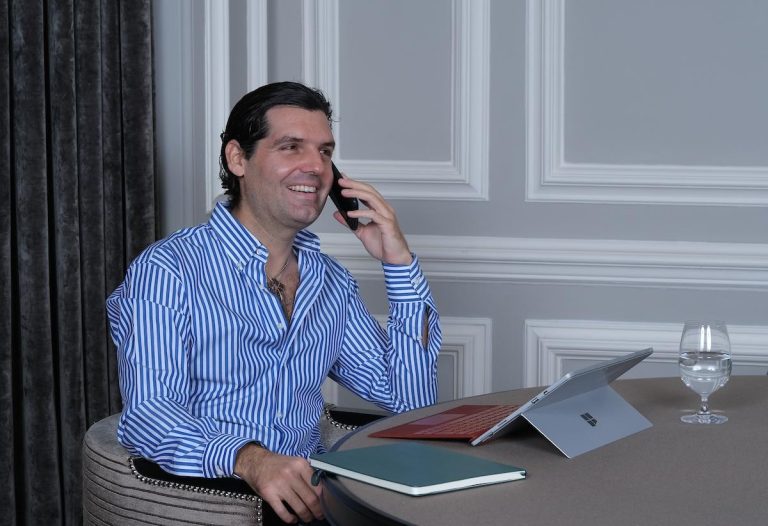Acquiring still sells itself as a tidy diagram: connect a processor, add a gateway, turn on a few payment methods, and you’re “live.” For a while that story holds. Then volume arrives, you enter a second market, or you onboard merchants with different risk shapes—and payments stop feeling like a simple integration. The payment layer starts behaving like an operating system: it shapes your risk posture, your checkout outcomes, what finance can reconcile, and what your SLA means when something upstream wobbles.
The symptoms tend to show up before anyone calls it an architecture problem. Soft declines creep up, so teams add retries—until those retries become traffic spikes and “retry storms” during minor upstream issues. Support escalations multiply because customers see inconsistent outcomes across the same card and the same flow. Finance flags reconciliation gaps as settlement timing shifts and data stops lining up cleanly. Chargebacks stop being an edge case and start looking like a parallel workflow that needs owners, tooling, and throughput.
The New Reality of Payment Acceptance: Complexity Is Operational
The hard part today isn’t “how many integrations can we wire.” It’s how quickly you can investigate, explain, and resolve what happens after the transaction attempt. Every additional rail, geography, and risk rule adds work: decision logs that need to be traceable, exceptions that need a playbook, disputes that need evidence and timelines, and reporting that must reconcile to real money movement—not just dashboard metrics. In regulated environments, that operational burden is not optional: you need auditability, consistent controls, and repeatable incident handling. In Europe and the UK, SCA expectations make this even more obvious: “acceptance” includes traceable decisioning and clean exception handling, not just an authorization response.
That is why payment complexity shows up on the P&L even when headline fees look stable. Conversion leakage hides inside decline patterns and messy fallbacks. Cost-to-serve climbs as humans get pulled into manual investigations, spreadsheet reconciliations, and chargeback casework. And the most expensive cost is usually the one nobody budgets for: the day-to-day drag of running payments without enough observability and control, where every new market launch quietly increases the number of things that can be “true” at the same time.
When the “One Provider Does Everything” Model Starts to Fail
The all-in-one promise is attractive because it reduces early-stage friction: one contract, one integration, one dashboard. The problem is that the same setup becomes a constraint the moment your roadmap stops being “more of the same.” Add a new geography with different scheme behaviour, launch a vertical with higher dispute exposure, or introduce local rails alongside cards—and change starts to compete with the provider’s backlog. You can move fast on your side, but the core acceptance logic often lives somewhere you cannot touch. In practice, lock-in rarely looks like a dramatic outage. It looks like weeks lost to dependencies—waiting to change things you used to control.
The bigger issue is opacity. You get an outcome, but you don’t get a usable explanation. Most “one provider” setups are built to output a result, not to give you an explanation you can use. The business sees approved/declined, maybe a generic reason code, and a few aggregate charts. But when approvals drop in one corridor, or a subset of merchants suddenly gets more soft declines, you cannot answer the questions that matter: which rule fired, which signal shifted, what changed upstream, what would have happened if the transaction routed differently. Teams end up reverse-engineering their own payments, and that is an expensive place to be because every investigation becomes bespoke.
For banks and PSPs the downside is amplified. They are judged not only by outcomes, but by governance: can you show control, justify decisions, and produce an audit trail that stands up to scrutiny. “Because the provider said so” is not an acceptable explanation when compliance asks why a certain merchant segment saw elevated declines, or when an auditor wants to trace how disputes and refunds were handled across systems. The more your acquiring stack becomes opaque, the more you’re effectively outsourcing accountability—while still being the party that carries the reputational and regulatory exposure.
That is why modern acquiring teams increasingly split the stack on purpose: a platform layer that governs acceptance and change, and a processing layer that stays deterministic, auditable, and resilient under load.
Platform vs Patchwork: What “Turnkey Acquiring” Actually Means
A lot of teams say they want “turnkey acquiring” when what they really want is relief from patchwork: a gateway here, a risk tool there, a separate reporting layer, and a merchant portal stitched together with internal scripts. It can work, but the seams become the product. Every change turns into coordination across vendors, data doesn’t line up the same way in each system, and operational ownership gets fuzzy: when something goes wrong, the first question is “whose dashboard is the source of truth?”
A platform approach is not “one more component.” It’s the layer that sits above the engine room and makes acquiring governable. In practical terms, it is an orchestration and gateway layer that controls routing and payment-method logic, exposes a consistent event model, and connects decisions to outcomes. It is where merchant lifecycle lives (onboarding, configuration, limits, status changes), where risk rules can be adjusted without rebuilding integrations, and where reporting is designed for operations and finance—not only for conversion charts.
That is what people usually mean when they look for a turnkey acquirer solution with integrated payment gateway: a single control plane for acceptance, not a bundle of unrelated tools. You notice it fast. You can launch new geographies and methods faster because orchestration doesn’t need to be reinvented each time. You can manage rules and experiments centrally, rather than scattering them across vendors. And you get cleaner analytics because the platform can capture the “why” behind outcomes—routing choice, rule triggers, fallback paths—so teams spend less time arguing about whose dashboard is right and more time fixing the corridor that’s bleeding conversions.
Processing Is the Engine Room: Settlement, Disputes, Auditability, Resilience
If the platform layer is the control plane, processing is the engine room. It is where transactions turn into settlements, where exceptions turn into casework, and where “what happened” has to be provable, not assumed. When teams treat processing like a plug-in, the checkout can look clean while the back office turns into daily triage.
Settlement is the first place this becomes visible. Timing differences, partial settlements, reversals, fee movements, and currency effects create gaps that finance cannot “eyeball” away. When data models don’t match across systems, reconciliation turns into a recurring investigation rather than a routine. People start building spreadsheets to bridge inconsistent identifiers and event sequences, and soon you’re paying senior ops time to do what the stack should do deterministically.
Disputes and chargebacks make it even clearer that processing is operational by default. They are not a metric; they are a workflow with deadlines, evidence requirements, representments, and downstream accounting impacts. If you cannot trace an individual transaction across its lifecycle—authorization, capture, settlement, refund, dispute events—you end up fighting cases in the dark. That is why auditability matters: traceability, event lineage, and an audit trail that shows which decisions were made, when they were made, and by which rule or actor.
This is also where resilience stops being an abstract “uptime” number. A processing incident doesn’t just drop transactions; it creates backlog, uncertainty, and delayed money movement. The question becomes MTTR in operational terms: how fast can you isolate impact, reconcile what is safe, and restore deterministic processing without leaving finance and risk teams guessing.
In that sense, a third-party acquirer processing platform is less about outsourcing and more about formalizing the machinery that banks and PSPs already operate implicitly—settlement discipline, dispute throughput, traceability, and recovery patterns that keep the business credible when something breaks.
Three Migration Patterns That Avoid a Big-Bang Rebuild
Most teams don’t need a rebuild. You can get real control and measurable improvements with migration patterns that respect existing contracts, merchant commitments, and day-to-day capacity.
Pattern 1: Overlay orchestration on top of current processing
This is the fastest path to impact because it targets what changes most often: routing logic, payment-method mix, fallback behaviour, and the quality of operational data. You keep the existing processing rails in place while introducing a control plane that can standardize events, improve observability, and let teams tune rules without waiting on multiple vendors.
Pattern 2: Carve out processing by segment or geography
When a subset of volume has distinct needs—specific local methods, a different risk profile, or different settlement constraints—you can migrate that slice first. The key is to pick a boundary that is operationally clean (one geo, one product line, one merchant tier) and run parallel controls until the new lane proves stable. This reduces blast radius and makes “learning” part of the migration rather than an afterthought.
Pattern 3: Greenfield for a new product or market
If you are launching something meaningfully new, treat it as a separate stack with explicit KPIs from day one. This avoids contaminating a mature book with experimental complexity and gives you a controlled environment to prove out routing strategy, dispute handling, settlement discipline, and monitoring. If it works, you can expand; if it doesn’t, you can stop without destabilizing the core business.
The Metrics That Tie Architecture to Money
If you can’t tie the architecture to money and workload, you’ll debate it forever. The goal is not to track everything—it is to track what translates into revenue retention, cost-to-serve, and risk exposure.
- Approval rate and soft decline share, segmented by geography, method, merchant type, and issuer corridor.
- Retry success rate, paired with retry-driven load (attempts per successful payment, peak amplification during incidents).
- Chargeback ratio and cost per dispute case (internal effort plus external fees), tracked by merchant segment and reason category.
- Reconciliation latency (time to a “closed” ledger view) and percentage of manual operations required to reconcile.
- Incident rate and MTTR, defined operationally (time to restore deterministic processing and reconcile impact).
- Cost per successful transaction, combining fees with operational overhead (support, risk review, finance casework).
- Time-to-launch a new method or geography, measured from decision to stable production with monitoring and reporting in place.
If these move the right way, “modular” stops being a philosophy. It becomes fewer tickets, fewer firefights, and a lower cost to run each successful transaction.
Executive Checklist: Questions Banks and PSPs Should Ask Vendors
Feature lists and pricing are easy. The hard questions are about ownership: who can change behaviour, what you can see at event level, and what you can prove after something goes wrong. The questions below are designed to surface that reality early. A “good” answer is usually specific, testable, and tied to ownership: what you can configure yourself, what you can trace end-to-end, and what you can prove to risk, finance, and auditors without reverse-engineering your own payments.
- Where do routing rules live, and who can change them? Is it configuration you own, or a ticket queue you wait in?
- What is the decision model behind an outcome? Can you see the “why” for approvals, soft declines, fallbacks, and retries?
- Which events are exposed to risk, finance, and operations—and at what latency? Not summaries, but raw lifecycle events with stable identifiers.
- How is auditability implemented? Do you get an immutable audit trail for rule changes, operator actions, and decisioning logic?
- How do disputes and chargebacks work as an operational workflow? Evidence handling, deadlines, representment support, and reporting that matches settlement reality.
- How are refunds, reversals, and partial captures handled end-to-end? Especially when multiple rails or processors are involved.
- What does reconciliation look like in practice? Required data fields, matching logic, exception handling, and the expected percentage of manual casework.
- What are the resilience and incident mechanics? Monitoring granularity, failover behaviour, replay/reprocessing, and clear MTTR expectations.
- How does the vendor support multi-geo operations? Local payment methods, scheme nuances, regional compliance requirements, and reporting by corridor.
- How is merchant lifecycle managed? Onboarding, limits, pricing rules, risk controls, status changes, and the ability to segment policies by merchant type.
- What is the migration path without business interruption? Parallel run support, cutover tooling, data backfills, and rollback options.
- What is the lock-in surface area? Data portability, API stability, and the practical ability to change one layer without rebuilding everything.
Conclusion: Modular Acquiring Is a Governance Decision
Modular acquiring is often described as an engineering preference. In reality, it is governance: who holds control over change, how decisions are explained, and how operational risk is managed as the business scales. The payoff is not elegance. It is speed you can safely use, and accountability you can defend.
The acquiring stack should be selected the way you select infrastructure: for observability, traceability, resilience, and operational throughput—not for how quickly you can connect an integration in week one. If payments are a core system, you eventually have to optimize for control, not convenience.















 Bitcoin
Bitcoin  Ethereum
Ethereum  Tether
Tether  XRP
XRP  USDC
USDC  TRON
TRON  Lido Staked Ether
Lido Staked Ether  Cardano
Cardano  Avalanche
Avalanche  Toncoin
Toncoin  Wrapped SOL
Wrapped SOL